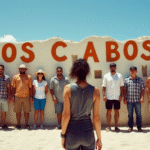Background on Nuevo León’s Cattle Industry and Current Challenges
Nuevo León, a state in Mexico, has not yet regained the zoosanitary status required to export live cattle to the United States. According to Senasica’s Sanitary Pulse, in the 2023-2024 cattle cycle, these exports plummeted by -58.8% compared to the 2022-2023 cycle, when the US imported 31,117 heads of bovine cattle.
Historical Context and Importance of the Cattle Industry
Despite facing challenges, Nuevo León’s cattle industry has historically been significant for both the state and the country. In the 2020-2021 cycle, amidst the Covid-19 pandemic, Nuevo León exported 31,045 heads of bovine cattle, marking a 24% increase from the previous period. However, this figure is far from the 69,841 heads recorded in the 2015-2016 cycle.
Senator Waldo Fernández’s Initiative
Senator Waldo Fernández, representing Nuevo León for Morena, is actively promoting a collaboration agreement between the state government, federal authorities, and the Senate of the Republic to regain the A-IV zone certification issued by the US Animal and Plant Health Inspection Service (APHIS).
Details of the Proposed Collaboration Agreement
Senator Fernández explained that he met with cattle ranchers in Lampazos, who informed him that APHIS had halted Nuevo León’s live cattle exports to the US since December 2023 due to administrative deficiencies.
To address this issue, Fernández proposed a transparency and collaboration agreement among the state government, federal authorities, and the Senate, with the Mexican Association of Cattle Ranchers (UGRNL) as observers. This agreement aims to closely monitor the processes required to regain the necessary certification for US exports.
Impact of Losing Zoosanitary Status
Multiple states lost their certifications due to not meeting the bovine tuberculosis zoosanitary status required by US health authorities for exports. Although the exact number of affected cattle ranchers is unknown, UGRNL comprises 45 local associations and over 13,000 members who would benefit from regaining this certification.
Nuevo León’s Cattle Industry: Breeds and Market
Nuevo León specializes in raising young cattle, with breeds like Beefmaster, Santa Gertrudis, Brangus, and Brahman chosen for their heat resistance. Angus and Simmental are also popular due to their high-quality meat. The state averages 500,000 heads of cattle in feeding annually.
The US remains the primary market for Mexican beef and meat products. In 2024, Mexico exported 258,45 tonnes of beef to the US, generating $2,064 million, according to SADER data.
Key Questions and Answers
- What is the current challenge faced by Nuevo León’s cattle industry? Nuevo León has not regained the necessary zoosanitary status to export live cattle to the US, causing a significant drop in exports.
- Who is working to resolve this issue? Senator Waldo Fernández, representing Nuevo León, is promoting a collaboration agreement among state, federal, and Senate authorities to regain the required APHIS certification.
- What breeds are commonly raised in Nuevo León? Beefmaster, Santa Gertrudis, Brangus, and Brahman are popular for their heat resistance. Angus and Simmental are also raised for their high-quality meat.
- Why is the US market crucial for Nuevo León’s cattle industry? The US is the primary market for Mexican beef and meat products, generating substantial revenue through exports.






